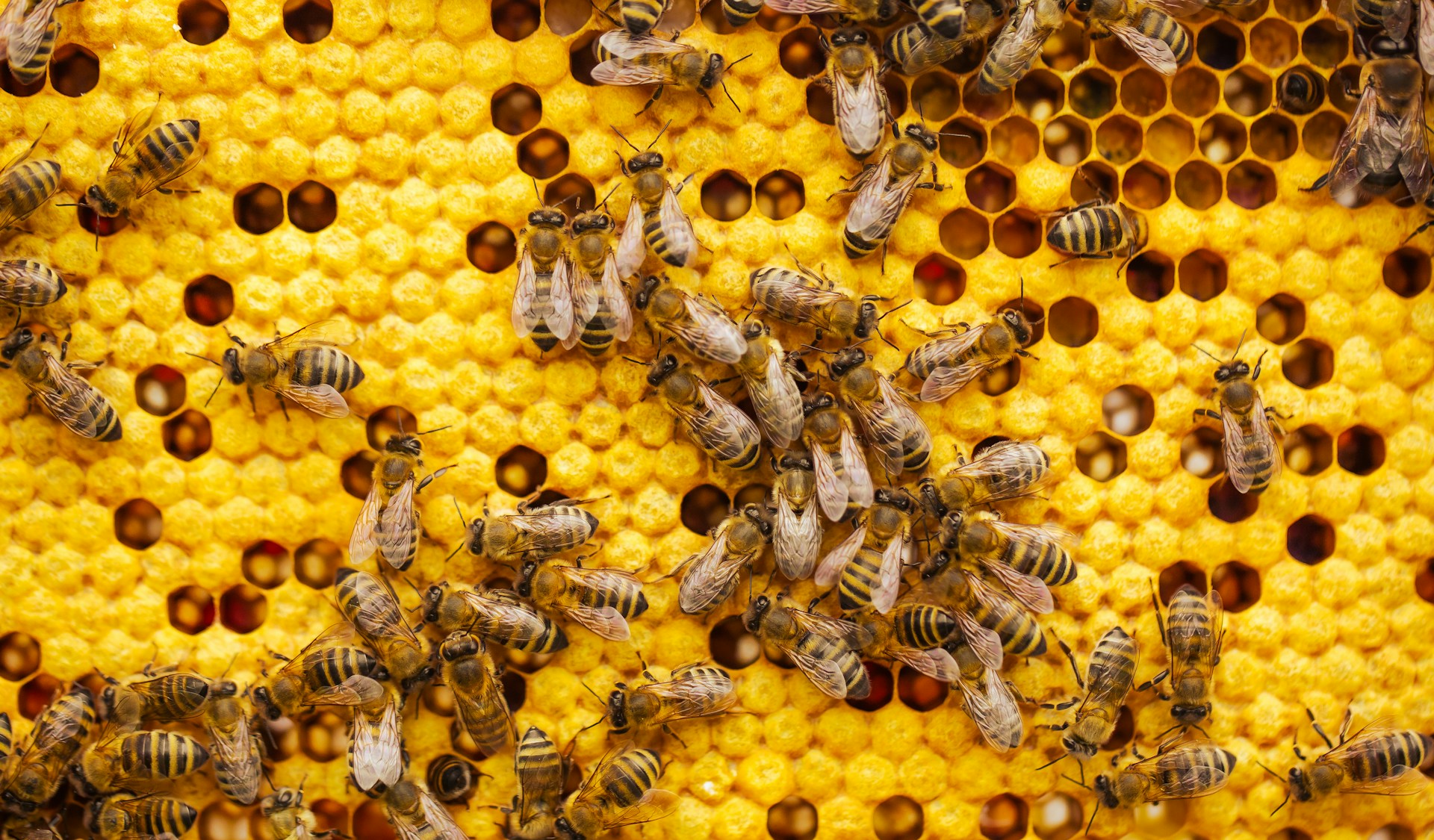The Biggest Threats to Honeybees and How to Save Them
Honeybees are essential pollinators that provide many benefits to humans and the environment. They pollinate about one-third of the crops we eat, such as fruits, vegetables, nuts, and seeds. They also produce honey, wax, propolis, and other valuable products. However, honeybees are facing many threats that endanger their survival and well-being. In this article, we will explore some of the biggest threats to honeybees and how we can help them.
HONEYBEES
1/3/20243 min read



The Biggest Threats to Honeybees and How to Save Them
Honeybees are essential pollinators that provide many benefits to humans and the environment.
They pollinate about one-third of the crops we eat, such as fruits, vegetables, nuts, and seeds. They also produce honey, wax, propolis, and other usefull products.
However, honeybees are facing many threats that endanger their survival and well-being. In this article, we will explore some of the biggest threats to honeybees and how we can help them.
Climate Change
Climate change is one of the biggest threats to honeybees, as it affects their habitats, food sources, and health.
Climate change can cause:
Habitat loss and fragmentation: As the temperature rises, some plants and flowers may shift their ranges or disappear, reducing the availability and diversity of nectar and pollen for honeybees. This can force honeybees to migrate or adapt to new environments, which may not be suitable or safe for them.
Food scarcity and imbalance: As the seasons change, some plants and flowers may bloom earlier or later than usual, disrupting the synchronization between honeybees and their food sources. This can result in food shortages or surpluses, which can affect the nutrition and reproduction of honeybees.
Disease and pest outbreaks: As the weather becomes warmer and wetter, some diseases and pests that affect honeybees may become more prevalent and virulent, such as varroa mites, nosema, and foulbrood. These can weaken the immune system and reduce the lifespan of honeybees.
Pesticides
Pesticides are another major threat to honeybees, as they can harm them directly or indirectly. Pesticides can cause:
Acute poisoning: Some pesticides, especially neonicotinoids, are highly toxic to honeybees, and can kill them instantly or within hours of exposure. Honeybees can be exposed to pesticides through direct contact, ingestion, or inhalation, either in the field or in the hive.
Chronic sublethal effects: Some pesticides, even at low doses, can have long-term negative effects on honeybees, such as impairing their learning, memory, behavior, and reproduction. Honeybees can be exposed to pesticides through residues in nectar, pollen, water, or wax, either in the field or in the hive.
Diseases and Pests
Diseases and pests are another serious threat to honeybees, as they can infect and infest them, causing various symptoms and damages.
Some of the most common diseases and pests that affect honeybees are:
Varroa mites: These are parasitic mites that feed on the blood of honeybees, and transmit viruses that can cause deformities, paralysis, and death. Varroa mites are the most widespread and destructive pest of honeybees, and can wipe out entire colonies if left untreated.
Nosema: This is a fungal disease that infects the gut of honeybees, and causes diarrhea, dysentery, and reduced lifespan. Nosema can also affect the behavior and orientation of honeybees, and make them more susceptible to other diseases and stressors.
Foulbrood: This is a bacterial disease that infects the brood of honeybees, and causes them to rot and die. Foulbrood can spread rapidly and contaminate the hive, and can only be cured by burning the infected hive and equipment.
How to Save Honeybees
Honeybees are facing many threats, but there are also many ways that we can help them and protect them.
Some of the actions that we can take are:
Plant bee-friendly flowers: We can plant a variety of flowers that provide nectar and pollen for honeybees, such as lavender, sunflower, clover, and mint. We can also avoid using pesticides or herbicides on our gardens, and choose organic or natural alternatives instead.
Support local beekeepers: We can buy honey and other products from local beekeepers, who practice sustainable and ethical beekeeping. We can also donate or volunteer for beekeeping organizations, who educate and advocate for honeybees and their conservation.
Become a beekeeper: We can learn how to keep honeybees in our backyard or rooftop, and provide them with a safe and healthy habitat. We can also join a beekeeping club or association, who can offer us guidance and support for our beekeeping journey.
Conclusion
Honeybees are amazing insects that provide us with many benefits and services, but they also face many challenges and threats, such as climate change, pesticides, and diseases and pests.
By learning more about the threats to honeybees and how to save them, we can appreciate the beauty and complexity of the natural world, and the importance of protecting the honeybees and their environment.
We hope you enjoyed this article and learned something new about the biggest threats to honeybees and how to save them. If you are interested in buying pure and delicious honey from our family beekeeping business, please visit our shop.
Thank you for your support! 🐝.

